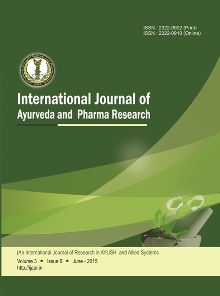Asphaltum Punjabianum (Shilajit): Unraveling Myths with Scientific Evidence
Abstract
Shilajit is a mineral-rich resin that has a long history of use as a rejuvenator (Rasayana) in Ayurvedic medicine to treat various ailments such as arthritis, infertility, and cognitive decline. Although it is becoming increasingly popular, with more scientific validations, many myths still surround its actual clinical potential. This review directly debunks several persistent myths about Shilajit based on a critical evidence-based analysis. Among the key myths addressed is the notion that only men should take Shilajit, that it is solely a sexual health enhancer, that it works acutely, and that its supplements can be contaminated, rendering them inherently unsafe or unnatural. According to scientific sources, Shilajit is beneficial for both men and women, and it has been proven to contribute to bone health, metabolic processes, antioxidation, and cognitive enhancement. Rather than acting as an acute stimulant, Shilajit functions more as a slow-acting adaptogen that must be taken continuously over several weeks to produce observable physiological adaptations. It is also well-tolerated even in very high doses, as indicated by its toxicological and clinical safety data, provided it is purified. The concerns regarding contamination are addressed through purification, with the majority of certified products meeting global safety standards. Secondary myths, including the belief that Shilajit causes constipation, is inadvisable to use in summer, or leads to kidney stones, are also disproven by clinical and preclinical evidence. Ultimately, one can conclude that Shilajit is an effective and safe multilateral nutraceutical with diverse therapeutic potential. This review advocates for its incorporation into modern healthcare through science-based, myth-busting integration and challenges clinicians to base their recommendations on usage grounded in empirical evidence and quality assurance.
Copyright (c) 2025 International Journal of Ayurveda and Pharma Research

This work is licensed under a Creative Commons Attribution-NonCommercial-ShareAlike 4.0 International License.


